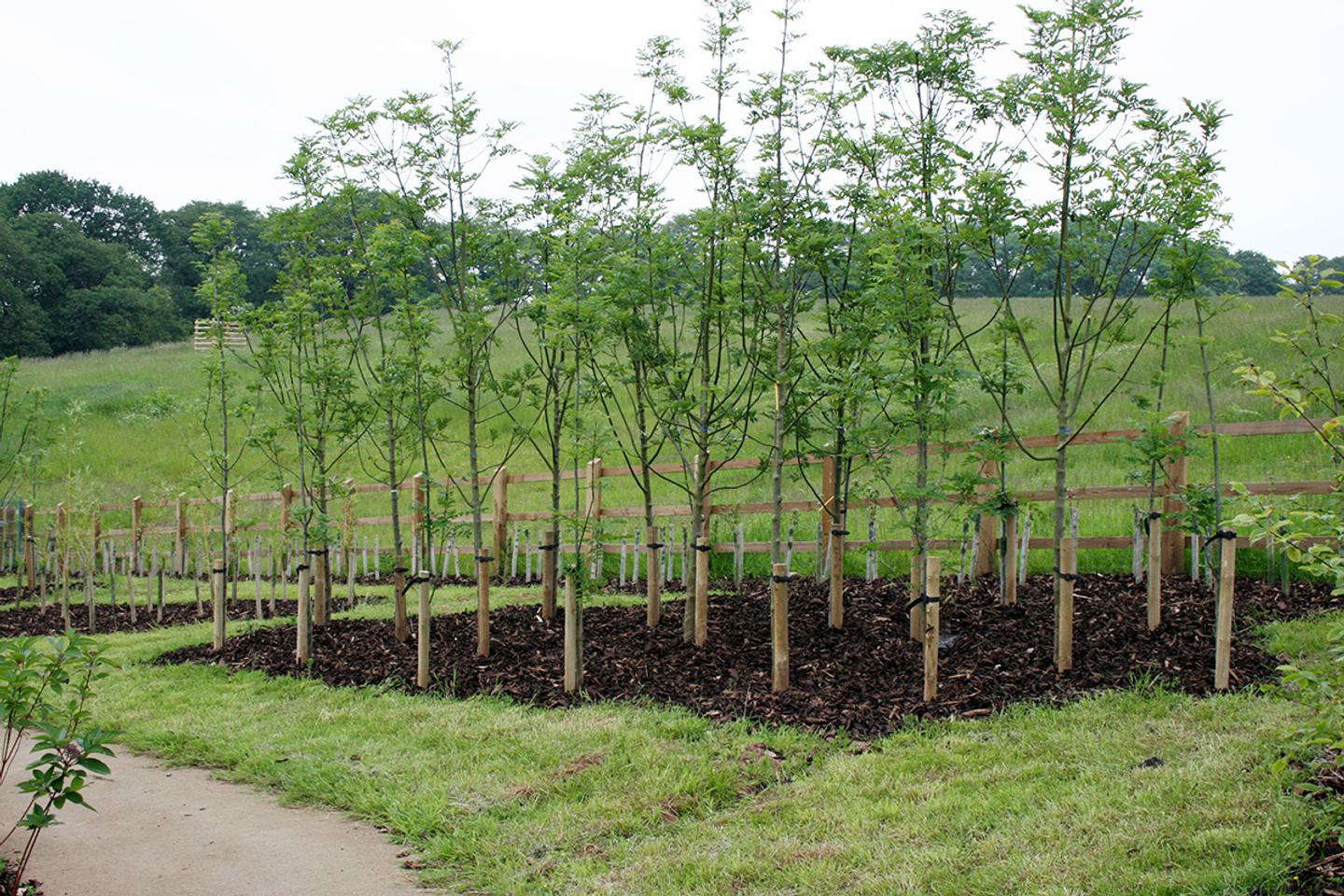Guides
Staking

We always advise customers to put stakes on their newly planted trees. Why is this necessary?
If you don’t use a supporting stake, wind will catch in the canopy, rock the tree and loosen the soil around the newly planted roots. This creates air pockets, inhibiting the roots’ ability to take up water and nutrients. Movement can also damage the fine hairs on the roots, and eventually lead to the tree failing.
Some guides advise against staking trees, arguing that the trunk needs to flex and strengthen. It is true that tree trunks strengthen in reaction to some movement, but the roots need to stay firmly in place to avoid the effects of windrock. The main purpose of the stake is to keep those roots firm, not to rigidly hold the upper stem. No root establishment = no trunk growth!
There is more than one way to stake a tree, but from experience, we find that upright stakes rather than angled are the easiest and surest way to give trees a good start. If possible, place the stake in the direction of the wind, so the tree pulls away from it when the gusts come, rather than towards the stake.
Once roots have developed in the ground, it is safe to remove the stake(s) and watch the trunk flex and strengthen. When is safe to remove depends on conditions and the size and growth rate of the tree, but 2-3 years is the rule of thumb. Stakes may not look too pretty, but they’re much nicer than dead trees!